Key Takeaways
- Fashion subcultures thrive on unique color palettes that distinguish them from mainstream fashion.
- Mixing contrasting hues is often a hallmark of bold subcultures, while monochrome or neutral tones can hint at minimalism or refined aesthetics.
- Each subculture’s color choices tie into its roots, music, environment, or cultural influences—yet remain open to individual interpretation.
- Layering, accessorizing, and customizing are key techniques to bring a subculture’s color palette to life.
- Being confident in mixing and matching is crucial. Adapt these palettes to fit your own personal flair and wardrobe.
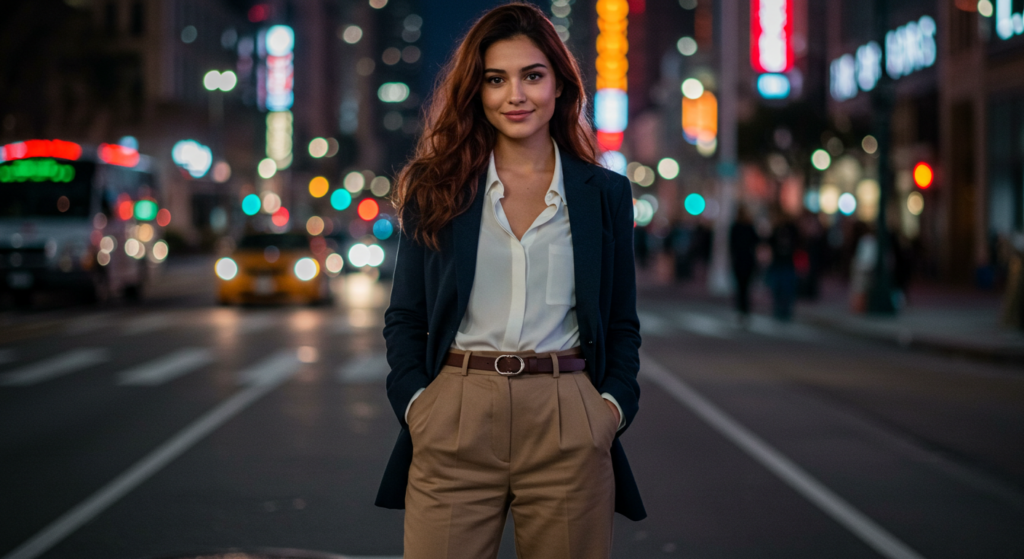
Introduction
Fashion subcultures add fresh layers of creativity to our daily style. Their unique identities often flow from music scenes, local movements, or art forms that spread worldwide. What sets them apart? Color. Each subculture has a hallmark palette—whether it’s the rebellious clash of Punk or the sleek neutrals of Minimalism. These color choices aren’t random. They reflect the subculture’s history, roots, and sense of aesthetics.
In this article, we’ll explore 14 major fashion subcultures and dive into their color palettes. For each subculture, we’ll discuss origins and influences, the key hues that make them stand out, and styling tips that help you adopt or adapt these looks. Whether you’re aiming for a head-to-toe transformation or just want subtle touches, color will be your guide.
From dark layers to vibrant street style—and from the energy of Punk to the technical sharpness of Techwear—there’s a subculture for everyone. Use these ideas to spark new outfit ideas, level up your wardrobe, or experiment with clothing you already own. Along the way, you’ll discover fresh ways to combine colors you might never have considered.
Dive in, explore each subculture’s distinctive palette, and let your creativity run wild. By the end, you’ll not only understand why certain color schemes pop up again and again, but also how to incorporate them into your personal style in a seamless, eye-catching way.
1. Punk

Origins and Influences
Punk fashion emerged from a sense of rebellion, starting with the 1970s punk music scene in the UK and the US. Bands like The Ramones, Sex Pistols, and The Clash wanted to differentiate themselves from the mainstream. Their clothes—often ripped, distressed, and accessorized with safety pins—went hand in hand with political protest. Over time, Punk style picked up influences from street wear, underground art movements, and global youth culture.
Key Color Palette
- Bold Reds: Symbolic of aggression and action. Red is often seen in patches, tartan prints, or statement pieces.
- Deep Blacks: A major foundation for any Punk outfit, representing rebellion and unity.
- Metallic Accents: Silvers in studs, zippers, and safety pins bring flashiness to the dark color base.
The interplay of black and red with metallic details is quintessential Punk. Sometimes you’ll find touches of tartan green, neon pink, or even white backgrounds on band tees.
Styling Tips
- Pair black skinny jeans with a red checkered shirt or band tee.
- Layer on a studded leather jacket for added edge.
- Accessorize with metal chains, spikes, or safety pins to reinforce that fierce look.
- If you want to dial back the attitude, tone down the studs but keep the red-and-black combo to channel a subtle Punk vibe.
2. Goth

Origins and Influences
Goth subculture grew from the late 1970s to the 1980s, weaving music from bands like Bauhaus and The Cure into a darker aesthetic. Inspired by Victorian fashion, dark romanticism, and sometimes even medieval attire, Goth style fuses elegance with drama.
Key Color Palette
- Rich Blacks: The foundation of Goth attire, often layered in different fabrics for depth.
- Deep Purples: Adds a lush, royal accent and breaks up the monotony of all-black.
- Midnight Blues or Crimson: These darker jewel tones can appear in velvet coats, accessories, or lace detailing.
The color palette is almost always anchored by black, but subtle shades of purple or crimson can elevate the ensemble.
Styling Tips
- Blend lace, velvet, and leather in a single outfit to create varied textures.
- Opt for ornate accessories, such as cameo brooches or elaborate chokers, to accent the darkness.
- Platform boots or sturdy footwear emphasize the dramatic edge.
- If head-to-toe black feels too much, introduce subdued jewel tones in smaller pieces like scarves, gloves, or belts.
3. Grunge

Origins and Influences
Grunge hails from the Pacific Northwest music scene of the late 1980s and early 1990s. Bands like Nirvana, Pearl Jam, and Soundgarden popularized an anti-establishment aesthetic. This style adopted a laid-back, thrown-together look that contrasted with the flashy excess of the 1980s.
Key Color Palette
- Earthy Browns and Greens: Nods to the natural environment of the Northwest and the preference for understated tones.
- Muted Plaids: Often seen in flannel shirts that define the Grunge look.
- Faded Denim and Dusty Blacks: Add a well-worn vibe.
Overall, the color scheme focuses on neutrals and muddy shades, embracing a “worn-out” effect.
Styling Tips
- Layer oversized flannel shirts over band tees to capture that carefree aesthetic.
- Pair ripped jeans or distressed shorts with scuffed sneakers or boots.
- Incorporate layering with a hoodie under a denim jacket for that “didn’t-try-too-hard” feel.
- Embrace muted tones, but if you want a pop, try a vintage burgundy or dark green flannel.
4. Hip-Hop

Origins and Influences
Hip-Hop fashion is deeply tied to the music scene and street culture that emerged in the 1970s Bronx. It has evolved through various eras—Run DMC’s influence in the ‘80s, the baggy silhouettes of the ‘90s, and the modern, sometimes luxe street style we see today. Each generation adds its flavor, but one element remains central: individuality.
Key Color Palette
- Vivid Primaries: Bright reds, blues, and yellows can appear in streetwear brands and sports team merchandise.
- Neutrals with Pops: Black and white base layers often get paired with bold accent colors like neon green or orange.
- Metallics: Gold chains and silver details are classic hip-hop elements that draw the eye.
This palette is all about standout contrasts and energetic combinations.
Styling Tips
- Experiment with color-blocked outfits: a black hoodie, white sweatpants, and bright orange sneakers.
- Add a statement piece like a bold-colored varsity jacket or a patterned bomber.
- Accessorize with chunky jewelry, caps, or beanies to reflect a personal twist.
- If you’re not into bright tones, try neutral sweats but add a pop of color through shoes, caps, or a logo tee.
5. Skater

Origins and Influences
Skater style, born from skateboarding culture, underscores practicality, comfort, and an anti-establishment streak. Rooted in 1970s California surf culture, it took on new life in the 1990s as skateboarding boomed globally. The vibe is casual and somewhat rebellious, reflecting the spirited, do-it-yourself approach of skateboarders.
Key Color Palette
- Earth Tones: Khaki, olive green, and beige appear often in cargo pants and chinos.
- Bold Graphics: Tees and hoodies frequently showcase eye-catching logos or prints in bright colors.
- Washed-Out Pastels: Skater brands sometimes use light pinks, blues, and yellows for a playful twist.
The essence is laid-back, with a few color bursts to set your style apart.
Styling Tips
- Pair relaxed-fit jeans or cargo pants with a loose graphic tee or hoodie.
- Choose skate sneakers in either neutral or statement colors, depending on your comfort zone.
- Add a beanie or flat-brim cap for that signature skater vibe.
- Layering a long-sleeve tee under a short-sleeve graphic tee can bring both comfort and style.
6. Bohemian
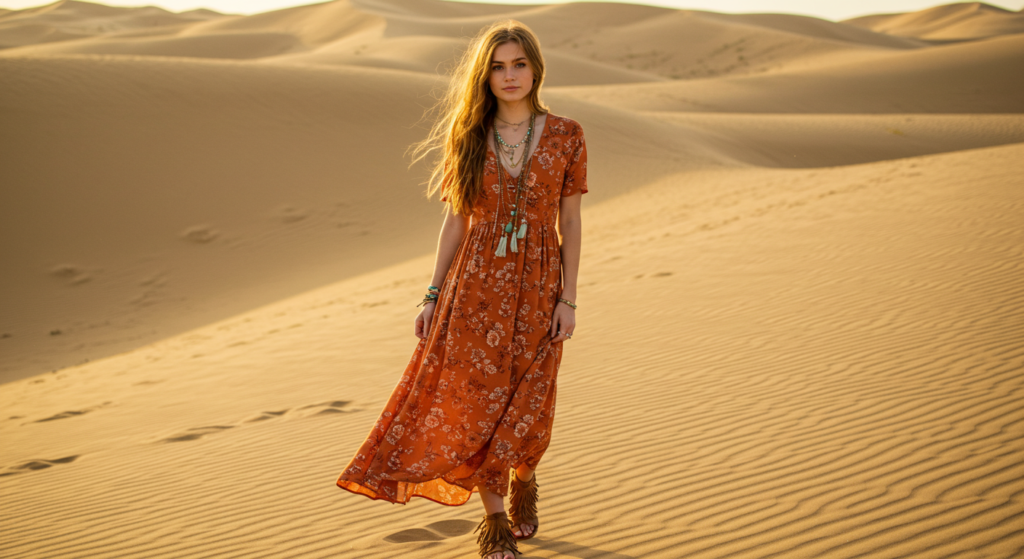
Origins and Influences
The Bohemian style, often called Boho, draws from hippie influences of the 1960s and ‘70s, plus global folk references. Think flowy dresses, ethnic prints, and a free-spirited attitude. The color palette is often reminiscent of natural landscapes and artisanal textiles.
Key Color Palette
- Warm Earth Tones: Rust orange, terracotta, and tan speak to desert and earthy inspirations.
- Soft Pastels: Powdery pinks, lavenders, and mint greens often appear in printed fabrics.
- Nature-Inspired Neutrals: Ivory, cream, and sandy beige ground the look.
Bohemian style leans toward rich patterns and textures that create a dreamy feel.
Styling Tips
- Layer maxi dresses or flowy skirts with oversized knit cardigans or shawls.
- Incorporate embroidered details or fringe, especially in handbags or vests.
- Pile on delicate jewelry—layered necklaces, stackable rings, or bangle bracelets.
- Mix and match patterns carefully; keep at least one neutral piece to avoid clashing prints.
7. Minimalist

Origins and Influences
Minimalist fashion took off with modern design principles that prioritize simplicity and clean lines. It resonates with those who prefer a clutter-free wardrobe and focuses on high-quality fabrics and tailored silhouettes. Pioneered by designers who believed “less is more,” Minimalism underscores functionality with a refined aesthetic.
Key Color Palette
- Monochromatic Neutrals: Black, white, and varying shades of gray.
- Subtle Earth Tones: Tan, beige, olive, and charcoal can soften the starkness of pure monochrome.
- Limited Accent Hues: Sometimes a pop of navy, muted pink, or sage green is introduced in accessories.
Clean, effortless color schemes define Minimalist wardrobes.
Styling Tips
- Build a capsule wardrobe of neutral basics—like well-fitted tees, trousers, and jackets.
- Focus on structured silhouettes; crisp lines enhance the minimal look.
- Opt for quality materials—cotton, linen, wool, or even technical fabrics—for a polished finish.
- If you want an accent color, add it via shoes, a single accessory, or understated prints.
8. Harajuku

Origins and Influences
Harajuku, named after a district in Tokyo, is a melting pot of Japanese street styles. It blends traditional elements with youth-driven creativity. The idea is to break fashion rules, combine bright hues, and express individuality without restraint.
Key Color Palette
- Pastel Explosion: Soft pinks, mint greens, baby blues, and lilacs are common.
- Neon Pops: Electric yellows, hot pinks, and bright purples appear in accessories or layers.
- Playful Prints: Cartoon characters, bold patterns, or even quirky polka dots in bright or pastel shades.
It’s all about playful colors that evoke a sense of fun.
Styling Tips
- Layer multiple items: skirts over leggings, jackets over shirts, accessories upon accessories.
- Mix pastel and neon for a standout statement. Consider a pastel pink skirt, neon lime socks, and a lavender jacket.
- Use kawaii accessories—cute bags, plush keychains, or hair clips—to amplify the whimsical vibe.
- If head-to-toe bright colors feel daunting, start with one statement piece and build around neutrals.
9. Preppy

Origins and Influences
Preppy style traces back to Ivy League campuses in the Northeastern US, drawing inspiration from collegiate sports like rowing, tennis, and polo. Over time, brands like Ralph Lauren, Lacoste, and Tommy Hilfiger gave Preppy fashion its staple pieces: polos, chinos, and blazers.
Key Color Palette
- Navy Blue: A cornerstone color, seen in blazers and sweaters.
- Crisp White: Essential for shirts, polos, and casual layers.
- Pops of Pastel: Light pink, baby blue, and mint in polos, sweaters, or ties.
- Classic Reds and Greens: Provide bolder statements, especially in stripes or sweater vests.
These colors convey a polished, traditional aesthetic.
Styling Tips
- Pair a navy blazer with khaki chinos for a timeless look.
- Keep accessories subtle: pearl earrings or a simple watch add sophistication.
- Stick to breathable fabrics like cotton or linen, especially in warmer months.
- Don’t shy away from pastel layering: a pastel sweater over your shoulders can look both relaxed and put-together.
10. Rockabilly
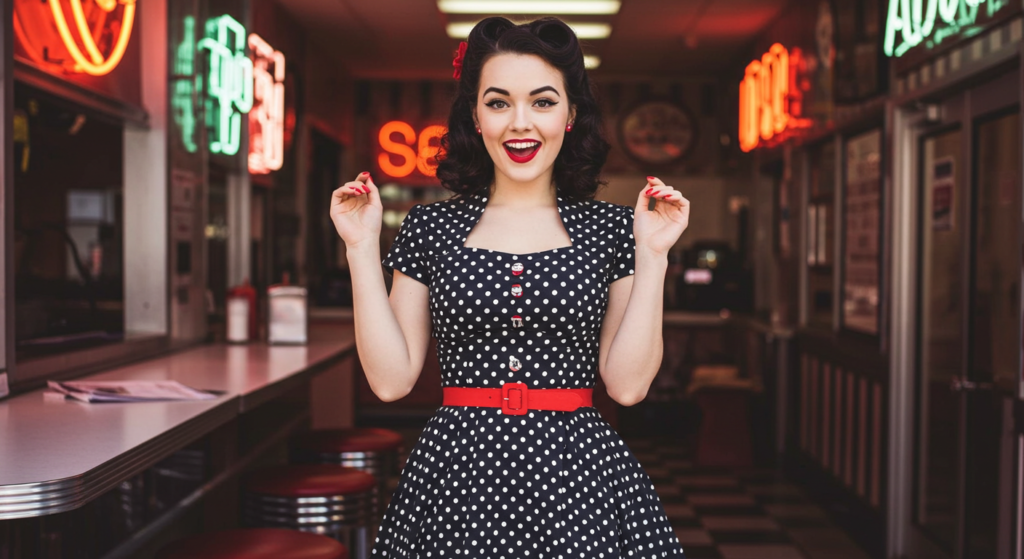
Origins and Influences
Rockabilly style is a retro throwback that combines 1950s rock-and-roll culture with a dash of country influence. Think Elvis Presley, Buddy Holly, and pin-up fashions. This subculture is all about playful, vintage flair with nods to the rebellious energy of early rock music.
Key Color Palette
- Cherry Red: Signaling boldness, especially in lipstick and nail polish, or accent pieces.
- Polka-Dot Neutrals: Black and white polka dots are an iconic pattern.
- Denim Blues: Whether in cuffed jeans or chambray shirts, denim is central.
- Pastel Hues: Soft pinks, baby blues, and mint greens can show up in dresses or accessories.
It’s a fusion of retro brights and classic neutrals.
Styling Tips
- Embrace pin-up silhouettes: high-waisted pencil skirts or flared dresses for a flattering shape.
- Go for leather jackets or denim jackets to top off your outfit.
- Accessorize with bandanas or hair scarves to bring out the Rockabilly vibe.
- Incorporate bold prints (like cherries, flaming dice, or skulls) to nod to the subculture’s playful attitude.
11. Techwear
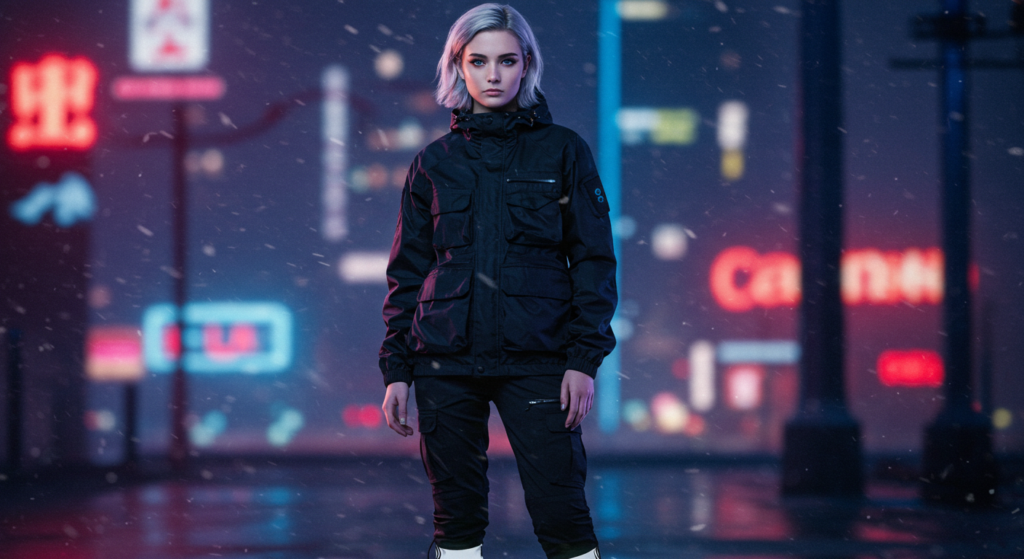
Origins and Influences
Techwear fuses urban style with utilitarian design. It draws on performance gear, military functionality, and futuristic aesthetics. It has gained momentum through brands like Acronym and influenced by cyberpunk culture. Expect pockets, sleek silhouettes, and technical fabrics.
Key Color Palette
- Shades of Black: Matte black, charcoal, and everything in between for a stealthy, modern look.
- Stealthy Greys: Dark grey or metallic grey often show up in outerwear.
- Muted Earth Tones: Subtle olive or tan for those who prefer variety.
- Reflective Accents: Reflective tapes or neon trims may appear on zippers and logos.
The palette sticks to subdued hues to highlight the high-tech details.
Styling Tips
- Layer technical jackets, utility vests, and cargo pants with multiple pockets.
- Look for waterproof, breathable, and stretch fabrics for both function and flair.
- Use bonding, taped seams, or reflective strips for an extra futuristic punch.
- Combine with minimalist sneakers or chunky boots that match the sleekness of the outfit.
12. Lolita

Origins and Influences
Lolita fashion, another Japanese subculture, takes cues from Victorian and Rococo styles, but flips them into sweet or sometimes darker versions. It’s characterized by elaborate dresses, petticoats, and attention to detail. Sweet Lolita leans pastel and cute, while Gothic Lolita embraces darker tones.
Key Color Palette
- Sweet Lolita: Baby pink, mint green, lavender, and white.
- Gothic Lolita: Predominantly black with touches of white or deep jewel tones.
- Classic Lolita: Beige, brown, and dusty roses for a more refined look.
Each variant has its own color story, but all focus on feminine shades and decorative patterns.
Styling Tips
- Build from a voluminous dress with petticoats to create that signature silhouette.
- Coordinate headdresses, lace gloves, or frilly socks to complete the ensemble.
- Stick to a consistent palette: if you go sweet, keep the accessories pastel. If you go goth, maintain black or dark contrasts.
- You can embrace a subtle version of Lolita by pairing a ruffled blouse with a knee-length skirt and modest accessories.
13. Vintage

Origins and Influences
Vintage fashion embraces pieces from decades past: from the 1920s flapper dresses to 1970s bell-bottoms. It’s about cherishing old-school craftsmanship and reviving timeless styles. Vintage enthusiasts often hunt in thrift stores or estate sales to find authentic, one-of-a-kind treasures.
Key Color Palette
- Sepia Tones: Browns, beiges, and creams that evoke an aged photo feel.
- Dusty Pastels: Soft blues, mauves, and yellows reminiscent of mid-century palettes.
- Rich Jewel Tones: Emerald greens, ruby reds, and sapphire blues for those glamorous eras.
- Black & White: Classic combos for retro suits, polka dots, or film-noir outfits.
Vintage outfits can range from subtle neutrals to flamboyant pops of color, depending on the era you pick.
Styling Tips
- Mix decades carefully but focus on key statement pieces—like a 1940s blazer or 1970s bell-bottom jeans.
- Accessorize with authentic vintage belts, brooches, or scarves for added charm.
- Tailoring can modernize a vintage piece, helping it fit perfectly into your wardrobe.
- Pair a vintage item with modern basics (like a crisp white tee or contemporary sneakers) to keep your look fresh.
14. Streetwear
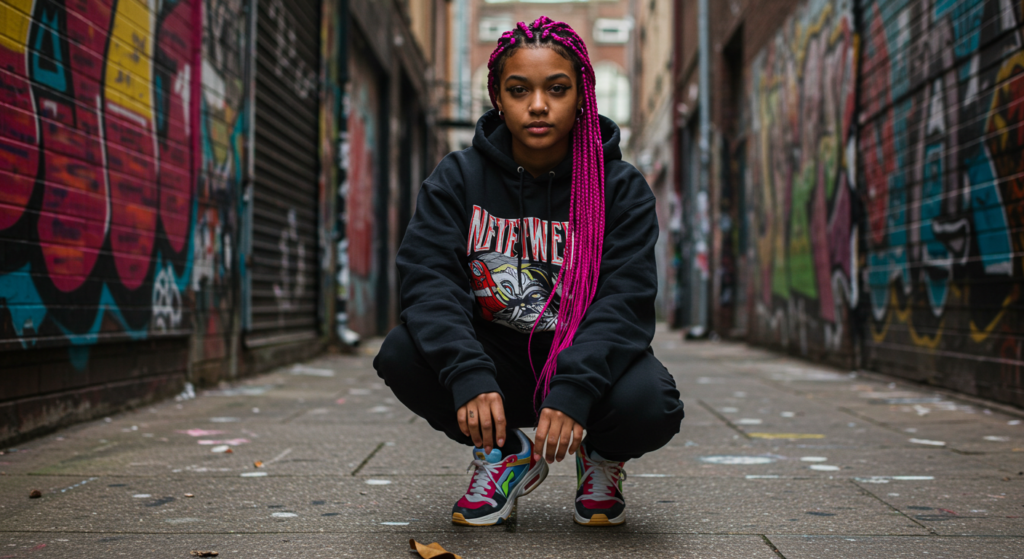
Origins and Influences
Streetwear is a global phenomenon, influenced by skate, surf, hip-hop, and youth culture. Brands like Supreme, Off-White, and Palace have popularized logo-centric designs and limited drops that build hype. Streetwear emphasizes comfort, individuality, and often striking graphics.
Key Color Palette
- Bold Primaries: Red, blue, and yellow for brand logos or statement prints.
- Neutral Foundations: Black, white, and grey hoodies, sweatpants, and tees form the base.
- Pops of Neon: Particularly in collaborations or limited-edition releases to stand out in a crowd.
- Camouflage Prints: Often included to add a hint of urban edge.
Streetwear’s palette is about contrast—and making sure brand logos or designs pop.
Styling Tips
- Opt for oversized hoodies, loose tees, and baggy pants for a modern streetwear silhouette.
- Layer with a bold jacket (bomber or puffer) that features standout colors or prints.
- Sneakers are a focal point: choose limited editions, color-blocked pairs, or collabs to elevate your look.
- Try logo mania if you’re comfortable making a statement; otherwise, pair a logo item with more neutral pieces to avoid overkill.
15. E-Girl

Origins and Influences
The E-Girl subculture emerged from platforms like TikTok, blending anime, punk, and kawaii aesthetics. It represents playful rebellion and bold self-expression.
Key Color Palette
- Contrasting dark bases with neon accents (e.g., black and hot pink)
- Soft pastel highlights, such as lavender or baby pink
- White used in layering or for detail accents
Styling Tips
- Pair striped long sleeves under oversized graphic tees for a layered look.
- Incorporate bold eyeliner, face stickers, or hair clips for a playful aesthetic.
- Finish the outfit with chunky platform boots or sneakers.
16. Steampunk

Origins and Influences
Steampunk is inspired by 19th-century industrial steam-powered machinery, blending Victorian elegance with futuristic, retro-futuristic, and fantastical elements. It has roots in speculative fiction and incorporates both historical and imaginative aesthetics.
Key Color Palette
- Warm metallics: bronze, copper, and gold
- Rich tones: burgundy, emerald green, and navy blue
- Neutral bases: brown, beige, and black
Styling Tips
- Combine Victorian-style clothing, such as corsets, waistcoats, and lace, with industrial accessories like goggles, gears, and pocket watches.
- Incorporate structured fabrics like leather or tweed to enhance the mechanical aesthetic.
- Add small details, such as metallic accents or clockwork-inspired jewelry, to bring the look to life.
17. Hippie

Origins and Influences
Rooted in the 1960s counterculture movement, Hippie fashion embraces themes of peace, nature, and free expression, with influences from music festivals.
Key Color Palette
- Earthy tones: browns, greens, and sandy neutrals
- Vibrant rainbow tie-dye shades
- Subdued pastels like cream or beige
Styling Tips
- Flowing maxi skirts or dresses and peasant blouses are staples.
- Accessorize with headbands, beaded jewelry, or woven sandals.
- Focus on natural fabrics like cotton or hemp for authenticity.
18. Pastel Goth

Origins and Influences
Pastel Goth combines traditional Gothic elements with candy-colored pastels, creating a sweet yet edgy aesthetic popularized in the 2010s.
Key Color Palette
- Black as a base
- Pastels like lavender, mint green, or pink for highlights
- Subtle neon touches or white accents
Styling Tips
- Pair black lace tops with pastel skirts or cardigans.
- Use statement chokers and pastel tights to mix edge with sweetness.
- Finish the look with platform shoes or Mary Janes.
19. Rave

Origins and Influences
Born from the electronic dance music (EDM) scene, Rave fashion emphasizes vibrancy, freedom, and performance-ready attire for all-night parties.
Key Color Palette
- Neon hues: pink, green, yellow, and orange
- Metallic or holographic details
- Black or white for a contrasting base
Styling Tips
- Opt for crop tops, mesh pieces, or reflective jackets.
- Layer kandi bracelets or neon accessories.
- Incorporate holographic leggings or UV-reactive clothing.
20. Visual Kei

Origins and Influences
Visual Kei is a dramatic Japanese fashion subculture tied to rock and metal music. Bands like X Japan championed its theatrical and elaborate style.
Key Color Palette
- Black as the foundation
- Bold reds, purples, and metallics for impact
- Bright highlights for added visual drama
Styling Tips
- Experiment with intricate hairstyles and dramatic makeup.
- Mix leather, lace, and velvet for a textured ensemble.
- Add accessories like gloves or chains for flair.
21. K-Pop Fashion

Origins and Influences
K-Pop idols constantly innovate fashion by blending streetwear with luxe, designer elements. Their eclectic looks inspire global trends.
Key Color Palette
- Vibrant shades like red, pink, and yellow
- Soft pastels (lavender, baby blue) for a delicate approach
- Core neutrals (black, white, and gray)
Styling Tips
- Layer oversized sweaters or hoodies with fitted shorts or skirts.
- Add chunky sneakers and eye-catching accessories like hair clips.
- Experiment with bold patterns and color blocking.
22. Mori Kei

Origins and Influences
Mori Kei, translating to “forest style,” is inspired by tranquil woodland settings and a desire for simple, cozy living.
Key Color Palette
- Neutral shades: beige, cream, and olive
- Subdued pastels like sage green or dusty pink
- Earthy patterns and textures
Styling Tips
- Opt for layered dresses, flowing skirts, and knit cardigans.
- Use whimsical details like lace trims or embroidery.
- Choose natural fabrics like linen and wool.
23. Dark Academia
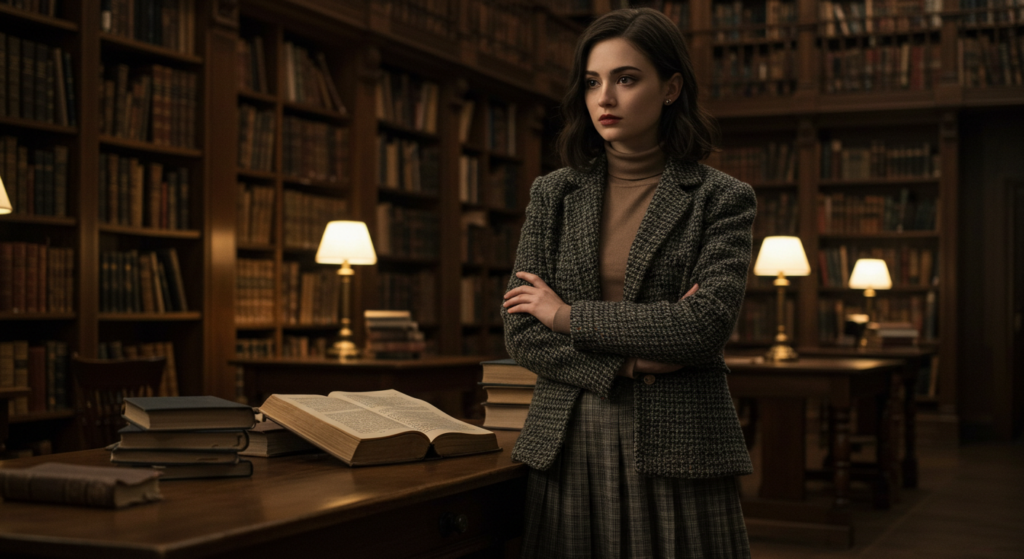
Origins and Influences
Dark Academia is an aesthetic tied to romanticized academic life, with inspirations from classic literature and European architecture.
Key Color Palette
- Muted tones: warm browns, deep greens, burgundies, and charcoal grays
- Cream or ivory for shirts and accents
- Occasional black for gothic touches
Styling Tips
- Pair tweed blazers with pleated skirts or tailored trousers.
- Accessorize with vintage satchels or wire-frame glasses.
- Stick to earthy tones for a cohesive look.
24. Normcore

Origins and Influences
Normcore celebrates everyday, unbranded basics, focusing on comfort and utility. It’s a minimalist response to fast fashion.
Key Color Palette
- Simple neutrals: white, gray, black, and navy
- Muted tones like olive or beige
- Minimal patterns
Styling Tips
- Stick to plain T-shirts, straight-leg jeans, and sneakers.
- Choose simple outerwear like zip-up hoodies or denim jackets.
- Keep accessories understated or absent for a clean, utilitarian aesthetic.
Conclusion
Fashion subcultures evolve from music, street movements, social trends, and personal expression. Yet, no matter their origin or ethos, color remains a defining factor. It communicates affiliation or individuality in a glance. Whether you’re drawn to the rebellious clash of Punk, the relaxed layered vibe of Grunge, or the futuristic minimalism of Techwear, your choice of colors sets the tone.

Feel free to mix and match these subcultures. Take the color palette of Techwear and blend in Punk elements, or add a Preppy twist to your Streetwear. There are no rigid rules. You can always dial down or amp up each palette to reflect your mood or the occasion. The beauty of fashion is that it’s malleable: you don’t have to box yourself into one style. Rather, pick and choose the colors and items that speak to you.
At the end of the day, confidence is your best accessory. Embrace what draws your eye, adapt it to your personal taste, and wear it proudly. Subcultures continue to evolve, so feel free to join the conversation by experimenting with new color combinations or taking a classic palette in an unexpected direction. Staying open-minded about color is one sure way to keep your style fresh and exciting.
Summary Table
| Subculture | Color Palette | Popular Items | Styling Vibe |
|---|---|---|---|
| Punk | Black, red, metallic accents | Leather jackets, band tees, studs | Rebellious, edgy |
| Goth | Black, deep purples, crimson | Lace dresses, platform boots | Dark, romantic |
| Grunge | Earthy browns, greens, faded denim | Flannels, ripped jeans, band tees | Laid-back, worn-in |
| Hip-Hop | Bold primaries, neutrals with pops, metallics | Hoodies, joggers, sneakers | Urban, energetic |
| Skater | Earth tones, bold graphics, pastels | Cargo pants, graphic tees, beanies | Casual, sporty |
| Bohemian | Earth tones, soft pastels, neutrals | Maxi dresses, fringe, embroidery | Free-spirited, whimsical |
| Minimalist | Monochrome neutrals, subtle earth tones | Tailored pants, plain tees, blazers | Clean, understated |
| Harajuku | Pastels, neons, playful prints | Layered skirts, kawaii accessories | Quirky, vibrant |
| Preppy | Navy, white, pastels, reds/greens | Polos, blazers, chinos | Polished, collegiate |
| Rockabilly | Cherry red, polka-dot neutrals, denim | Flared dresses, bandanas, leather | Retro, playful |
| Techwear | Black, grey, muted earth tones, reflective | Utility jackets, cargo pants | Futuristic, functional |
| Lolita | Pastels/whites (Sweet), black/dark (Gothic) | Ruffled dresses, petticoats | Elaborate, doll-like |
| Vintage | Sepia tones, dusty pastels, jewel tones | Retro blazers, classic dresses | Timeless, nostalgic |
| Streetwear | Bold primaries, neutrals, neon pops | Hoodies, sneakers, loose tees | Trendy, expressive |
| E-Girl | Dark bases with neon/pastel pops | Layered tees, striped sleeves, chunky boots | Playful, internet-inspired |
| Steampunk | Warm metallics (bronze, copper), rich tones (burgundy, emerald), neutral bases (brown, beige) | Corsets, waistcoats, goggles, pocket watches | Retro-futuristic, industrial elegance |
| Hippie | Earthy neutrals, tie-dye brights | Maxi skirts, bell-bottoms, headbands | Free-spirited, relaxed |
| Pastel Goth | Black mixed with lavender, pink, mint | Lacy black items, pastel cardigans, platform boots | Sweet yet edgy |
| Rave | Neon pink, yellow, green, metallic, holographic | Crop tops, kandi bracelets, reflective leggings | High-energy, dance-centric |
| Visual Kei | Black base, bold red/purple accents | Dramatic makeup, mixed fabrics, spiked hair | Theatrical, rock-inspired |
| K-Pop Fashion | Vibrant colors, core neutrals, bold statements | Oversized hoodies, chunky sneakers | Trendy, eclectic |
| Mori Kei | Soft neutrals, earthy pastels | Layered dresses, cozy knits, vintage accessories | Whimsical, forest-inspired |
| Dark Academia | Warm browns, deep greens, charcoal, burgundy | Tweed blazers, turtlenecks, Oxford shoes | Intellectual, moody |
| Normcore | Unbranded neutrals, understated jeans, T-shirts | Simple hoodies, minimal sneakers | Casual, blend-in |
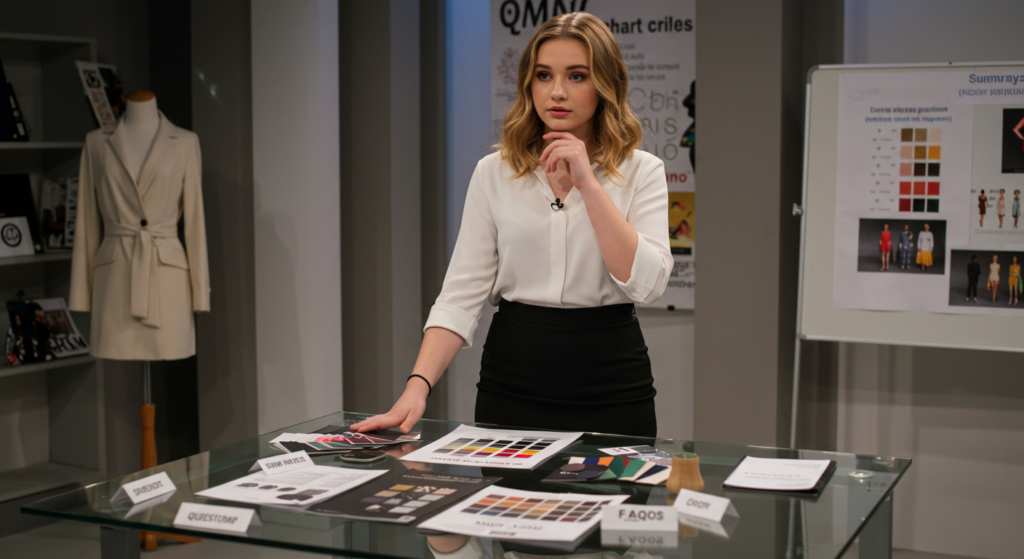
FAQ
Q: Do I need to stick strictly to one subculture when choosing my outfit?
A: Absolutely not! You can blend different elements from multiple subcultures. Experiment with a hybrid style—for instance, pair a Punk-inspired jacket with a Streetwear tee. Fashion is about self-expression, so feel free to customize your look.
Q: How do I introduce a color palette from a subculture without overhauling my entire wardrobe?
A: Start with accessories or a single statement piece. For example, if you admire the bright colors of Hip-Hop style, try adding a boldly colored cap or sneakers to your existing outfits.
Q: Are there budget-friendly ways to explore these subcultures?
A: Thrift stores, vintage shops, and online resale platforms are great places to find affordable pieces. You can also DIY details like patches for a Punk jacket or custom embroidery for a Bohemian bag.
Q: Do the color palettes ever change for a subculture?
A: Yes, subcultures evolve over time, incorporating new trends or influences. However, there are always core colors that remain identifying markers of each style.
Q: What if I don’t feel comfortable with very bright or very dark colors?
A: Adapt the palette to fit your comfort level. If Gothic style intrigues you but you dislike all-black outfits, you could add deep purple or dark blue accents to a mostly neutral or lighter ensemble. It’s all about personalizing the look.
Embrace the joy of mixing and matching, and let these subculture palettes spark your creative expression. Happy styling!

Anna West, the visionary behind Clothes Color Guide, is our go-to for all things fashion. Merging the finest of runway trends with everyday style, she demystifies the world of color and pattern. While clothing is her mainstay, Anna also shares insights on interior design, pet care, and relationship advice. Dive into her articles and emerge with a vibrant perspective on style and life.
Reviewed By: Joanna Perez and Marcella Raskin
Edited By: Lenny Terra
Fact Checked By: Sam Goldman
Photos Taken or Curated By: Matthew Mansour
